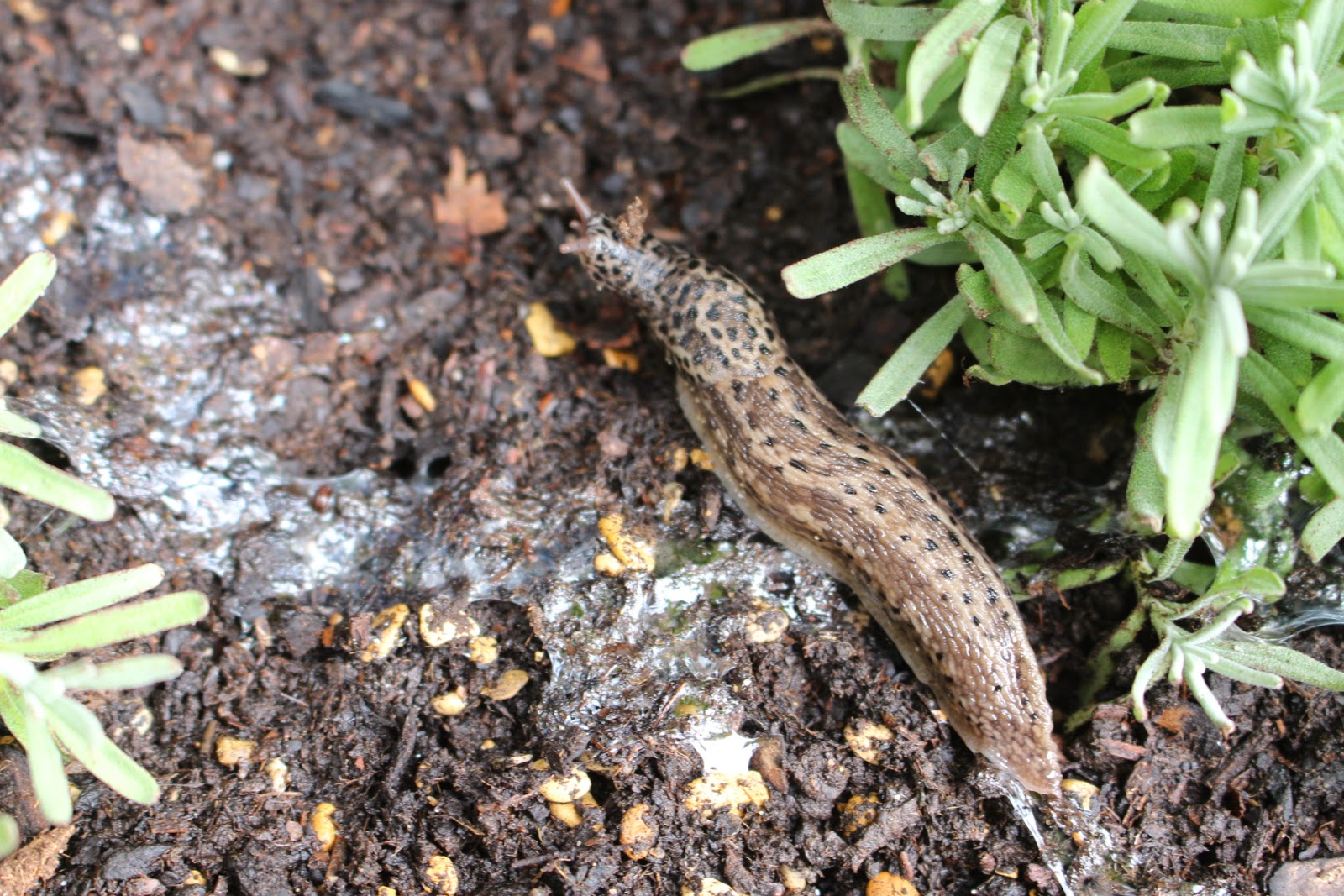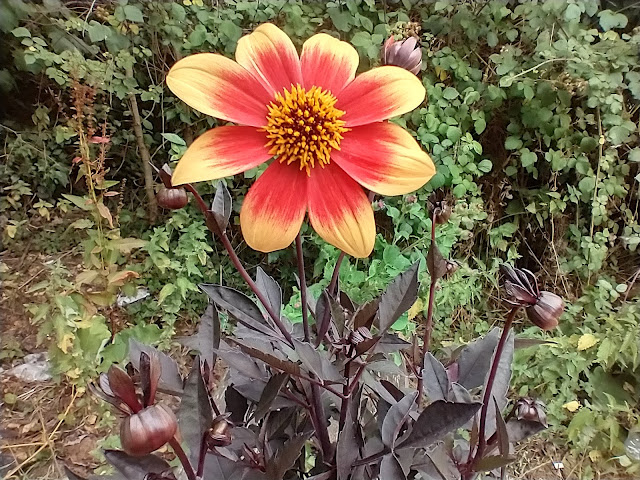Slugs: A Surprise Garden Friend
I found this very distinctive slug noodling around one of my garden pots recently. It's a leopard slug and my niece and nephew could see immediately how it got its name.
Unlike most slugs, these are a surprise garden friend. They eat fungi, rotting plants and other slugs, so they help keep the garden tidy and free from their pesky cousins. That's a huge thumbs up from me.
They're thought to be widespread in the UK, but actual records are scarce. Therefore OPAL (the Open Air Laboratory) is looking to find out more about its distribution via its Species Quest initiative.
You can help by sending in your sightings of this, plus any devil's coach horse, green shieldbug, small tortoiseshell butterfly, tree bumble bee or two-spot ladybirds which cross your path.











As slugs go, this one is rather beautiful (apart from the slime). I saw loads of these in the garden in spring but the whole slug thing seems to have died down with last month's lack of rain. I've recently identified a swarm of bugs on my tomatoes which I thought were baby spiders; turns out they're baby green shield bugs. Aahh, we live and learn!
ReplyDeleteYes, Caro these are a particularly slime rich slug! And yes, they are rather beautiful :)
DeleteSlugs are on the march again here after the Bank Holiday week's rain :(
Thanks I've recorded out shield bug sightings
ReplyDeleteThanks Sue - we get lots of the shield bugs too, but as soon as I went looking for them, the hawthorn shield bug turned up instead. I found a great online ID guide which shows all the different stages of the various species:
ReplyDeletehttp://www.britishbugs.org.uk/heteroptera/idcards/life_stages.html
In my experience this type of slugs is omnivorous, so yes, they will eat fungi, rotted plant rests and the occasional other slug, but they will also munch up the lettuce... And as they grow big (up to 20 cms), they eat quite a lot!
ReplyDeleteHI Mir and welcome :) That's interesting, I'll have to see if that's the case. This particular one definitely left all the plants alone, thank goodness!
DeleteI've seen too many slugs on the plot this year but none of these. Flighty xx
ReplyDeleteIt is THE year for slugs isn't it? :(
DeleteIf green shield bugs are what I think they are I have loads on the raspberries. Glad to see a helpful slug for a change.
ReplyDeleteHave a look at this ID guide if you're not sure CJ
Deletehttp://www.britishbugs.org.uk/heteroptera/idcards/life_stages.html
Hmm. It is pretty but is still a slug. I don't think I've seen any, only numerous less attractive beasts. We had a respite in the hot weather but now I can't walk up the garden without seeing half a dozen and they are HUGE.
ReplyDeleteI've seen shield bugs though. I'll check out which ones they are. And I feel I've seen more butterflies this year but still not very many.
Funnily enough whilst slugs are indeed in abundance this year, I've not seen that many of the really huge ones - thank goodness. Butterflies have been strangely scarce until the past couple of weeks and they seem to be making up for lost time now - there's oads of tortoiseshells enjoying the garden at the moment :)
DeleteIt's nice to know there are some friendly slugs about, I don't think we have any here, or if we have, I haven't seen any.
ReplyDeleteKeep your eye out for them Pauline - you never know when one might appear...
Delete